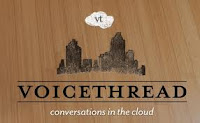Earlier this year, I wrote a short post over the Teaching Channel
lesson planner. It's a great tool for teachers who want to gather all their resources while preparing their lesson plans. However, Teaching Channel has a ton more resources than just the lesson planner. Here's a look a some of their resources in more detail:
Teacher Workspace
What is great about
Teaching Channel is that it provides a "workspace" for teachers--a place to save videos, lesson plan resources, and notebooks of notes over videos.
Here's a snapshot of what your workspace would look like:
With your workspace on Teaching Channel, it provides a central "hub" of your selected resources so that you don't have to spend time searching for something you previously saved.
Videos
This is one of my favorite tools that Teaching Channel offers. On the Teaching Channel website, there are several professional development videos (which is constantly growing) over subject areas such as Math, Science, and Social Studies. Here's one I liked from the Social Studies selection over the Declaration of Independence:
What is also great is that you can search through the library of videos by subject, topic, and grade level.
Lesson Planner
As I've stated before, I've only briefly discussed the lesson planner from Teaching Channel. However, the lesson planner is a solid collection tool for teachers to use and it deserves more detail.
The first thing that you'll want to get before beginning to use the lesson planner is the "lesson planner plus" extension for your web browser (once you've created a account, you can get the link to it on the lesson plan page). This is similar to the Evernote extension in that you can save resources like articles and webpages. Once you've decided to use the selected resource, you can choose to save it into your lesson planner directly for future reference. When you use the Teaching Channel plus tool you can choose to create a title of the resource, schedule a particular month for when you will be using it, and set reminders for yourself to check the resource at a certain point.
Here's what the lesson planner looks like:
When you save the content into your lesson planner, it will detail the source from where you got it and the date added. This way, if you are research for material for your lesson plans and come across something you like, all you have to do is save it to your Teaching Channel lesson planner and you can continue on researching.
Notebooks
Notebooks on Teaching Channel are the collection of notes that you've taken on videos from the Teaching Channel library. If you have ever saved a video and then gone back to it a few days ago and forgotten what you were thinking about at the time you were watching it the first time, this will help jog your memory.
Notice in the image above, on the right side, there is a option to add notes to the video while you are watching it. This way, when you do go back to it you can read over your notes for a quick reference. Once you do save your notes on the video, they are saved into "notebooks" on your Teaching Channel workspace for a quick referral of what video and notes you were previously working on.
Teacher Connections
One of the coolest things about Teaching Channel is that it allows you to connect with other educators through the Teaching Channel website. You can follow educators from different subject areas, grade levels, and roles (teachers, admins, etc). Once you follow another educator, you can share notes and other ideas from videos.
Conclusion
Teaching Channel has a ton of resources that educators can use to help with their profession. The website is constantly making updates and changes so I'm sure more good things are to come. By the way, did I mention all this is free?








































